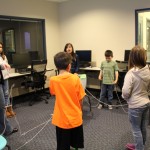http://www.northcountyoutlook.com
 Dr. Larry Nyland has shepherded the Marysville School District as its superintendent since 2004, but he has announced his plans to retire at the end of the current school year.
Dr. Larry Nyland has shepherded the Marysville School District as its superintendent since 2004, but he has announced his plans to retire at the end of the current school year.
Nyland, 64, has been invested in public education for the past 42 years, with a career that has taken him from Oak Harbor to Alaska, then back to Washington with positions in Pasco, Shoreline and the Highline School District before coming to Marysville.
He inherited a tough climate in Marysville: a 49-day teachers’ strike in 2003 had resulted in declining enrollment, and citizens hadn’t passed a school bond issue in 16 years. Nyland focused on engaging the community in the district’s education goals, working cooperatively with the teachers’ union, and solidifying partnerships with the Tulalip Tribes as well as local community service organizations.
Graduation rates have risen by 20 percent over his tenure, and schools within the district have been recognized by the U.S. Department of Education and the state’s Office of the Superintendent of Public Instruction (OSPI) for their achievements.
This year, the district’s Board of Directors was named School Board of the Year, a reflection of Nyland’s consistent messaging and encouragement.
“I love thinking and dreaming about what we can become, about the needs we can fill, the lives we will change, the future we are building for our community,” Nyland remarked in written comments to district staff.
“The district is once again at a turning point,” he continued. “New challenges lie ahead: new national standards and exams; new elections for levies, bonds and technology; and new leadership in many district roles. Now is the time to launch new dreams and follow them through to fruition.”
School board president Chris Nation praised Dr. Nyland “for his leadership, dedication and commitment to improving the lives of the children of the Marysville and Tulalip communities, providing excellent professional development opportunities for staff, and his organizational leadership district-wide.”
Jodi Runyon, the superintendent’s executive assistant, said, “Dr. Nyland came to Marysville at a time when we needed him most and he has done great things for our district and the community. We will be challenged to sustain the work that’s been done and continue to build upon the strong educational and organizational foundation he helped create.”
Nyland was named the state’s Superintendent of the Year in 2006, and the lifelong educator will no doubt continue to be involved in Marysville’s educational goals as a member of the community.
“I hope to still be engaged in education,” he said. “I still have a real heart for students.”
The process of selecting a new superintendent will begin on Monday, as the school board chooses a consultant search firm. Nation noted that the board will seek community and staff input to establish criteria for the district’s next leader.













